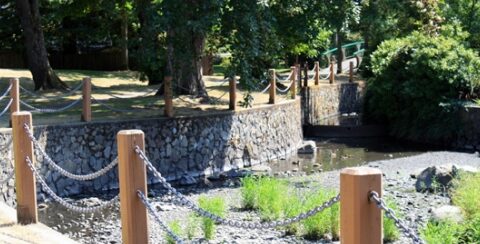
Bowker Creek is around 14-1,1500 years of age. Bowker Creek is named after John Sylvester Bowker, an American settler who came to Oak Bay in the 1860s. Bowker Creek runs from the wetland on the University of Victoria campus through the District of Saanich and the City of Victoria, and discharged to the sea through the District of Oak Bay.

Unfortunately, Bowker Creek suffers from many environmental concerns, here are some of the main ones, which will been gone into further detail in the next entries:

Bowker Creek has been artificially deepend/ straightened with cement and rock. Due to this, Bowker Creek has been separated from its floodplain and destroyed. Leading to, the floodplain has been converted to urban land and the creek has increased flow speed, resulting in erosion. No riparian zones are left and excess water isn't soaked up.
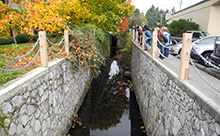
Most of Bowker Creek's watershed is composed of impervious surfaces, which causes water to travel straight into storm drains, instead of being soaked up by vegetated areas. Storm drains are connected to bodies of water, becoming contaminated by surrounding surfaces such as automotive oil runoff that find their way to the watershed, polluting water.

Many years ago, the Bowker Creek watershed was cleared for agricultural purposes, but now urban development has led to species of wildlife leaving the area. Riparian areas are most affected because they are exposed to high flows, filter contaminants and flooding. Urban development prevents growth of tissues, and decreases vegetation and habitat.
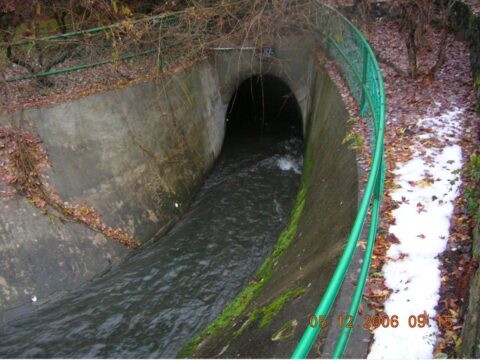
Runoff causes water pollution because it sometimes includes debris, chemicals, and other pollutants picked up by the rain. Fluids from the roads around Bowker creek go through storm drains, and the toxins are bad for the water. We need to make sure our watershed produces unpolluted runoff to increase the creeks water quality.

Due to industrialization, a lot of Bowker Creek floods during heavy rainfall, such as Trent street near St Patrick's School. To stop this issue, environmentalists are trying to increase the amount of natural habitat around the watershed, and create more storage areas for water and preventing downhill flooding by creating small ponds and wetlands.
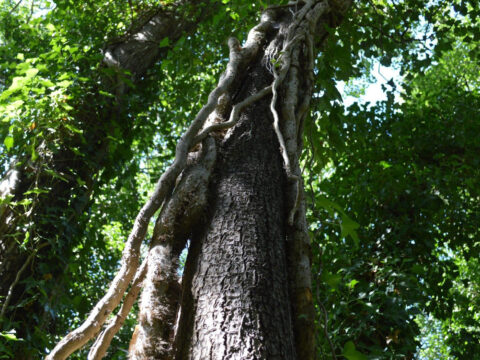
Bowker Creek's native vegetation has become strangled by the many invasive plants that grow. Willows (one of the invasive plant species in Bowker Creek)not only suppress native plants but, also clog the stream channels because of their aggressive root systems. Invasive plants outcompete native plants, hence reducing biodiversity in the ecosystems.

Many watersheds have a base document Integrated Storm Water Management Plan (ISMP). The Bowker Creek Blueprint: The Hundred Year Action Plan to Restore Bowker Creek Watershed,; is the intiative's unique verion of an ISMP. The restoration will significantly increase overall creek health by improving water quality, habitat, and flow conveyance.
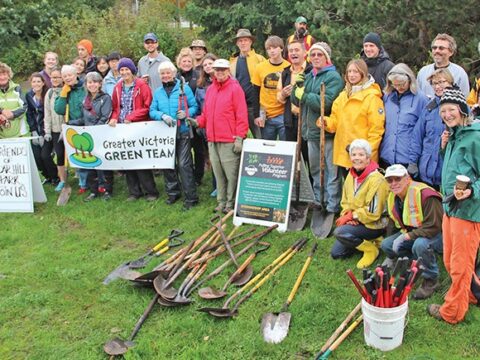
It's very important to maintain a natural Bowker Creek. There are many easy ways to do our part, for starters, we would have to carefully watch the growth of invasive plants. We should also watch the pH levels of the water, and not use fertilizers in our gardens, to prevent toxic runoff. Also, spreading awareness can go a long way for the creek.
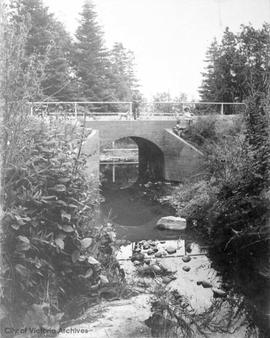
Before:
-natural water channel/flow
-surrounded by wetland
-many fish/ wildlife
-First Nations derived food and fresh water from the stream
-nutrients transported from the creek, supported Oak Bay's rich ecosystem
Currently:
-urban development and agriculture expanded
-stream channel was straightened, excavated, and enclosed in pipes
-lowered water levels
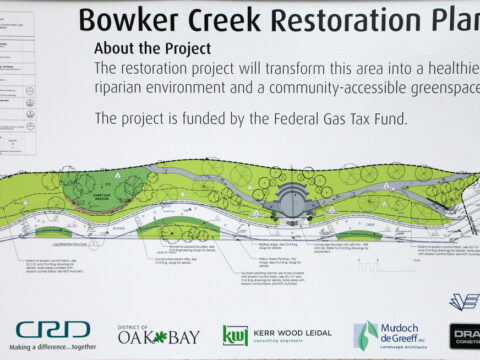
There are a number of positive things we will gain from restoring Bowker Creek, such as the purification of air and water, controlled decomposition of wastes, improved quality of soil and vegetation, nutrient cycles, oxygen production, cultural and spiritual benefits, pollination of crops and vegetation, and reduced greenhouse gases.

Here you can view a time lapse of the Bowker Creek reconstruction at Oak Bay High School.

For more information on OB16’s playlist, view our google document.














